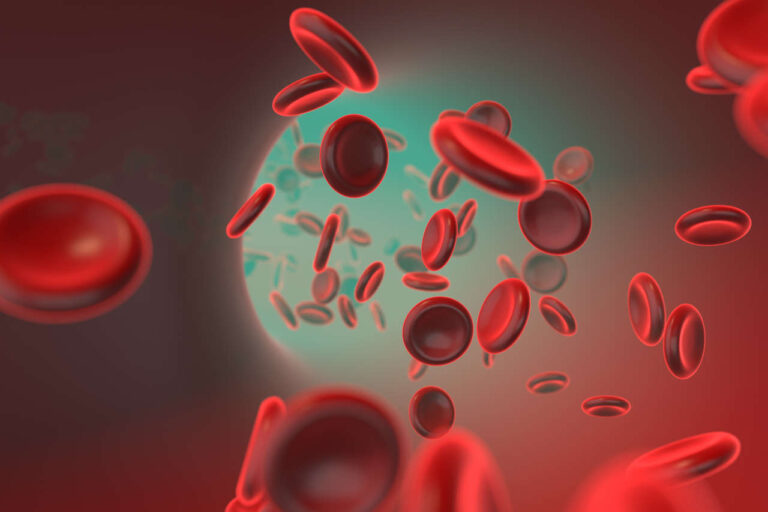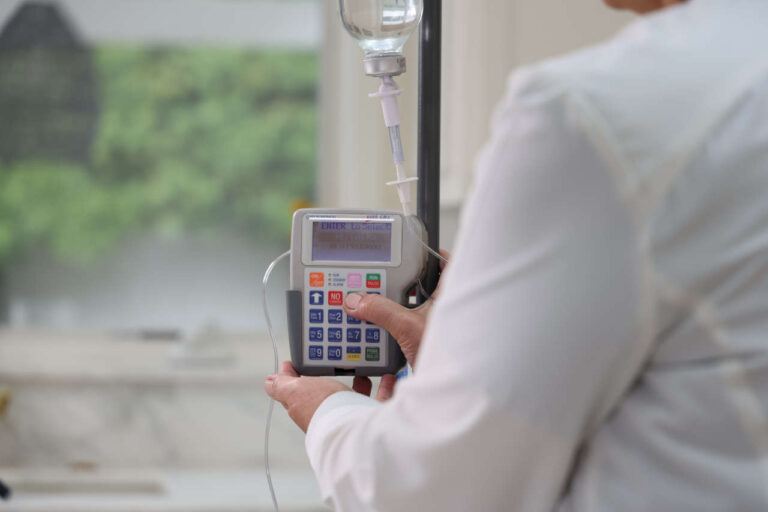
Studies suggest that intravenous immunoglobulin (IVIG) therapy for small fiber neuropathy (SFN) can only be effective if the underlying cause is known. Small fiber neuropathy is a chronic condition characterized by damage to small unmyelinated nerve fibers of the peripheral nervous system (the network of nerves lying outside the brain and spinal cord).
Get Your IVIG Dose
At-Home InfusionNormally, these small nerve fibers are present under the skin and go all over your body, most commonly in the hands, legs, and feet, to convey sensory information about pain and temperature.
Damage to these small nerve fibers results in excruciating pain, burning sensations, tingling, and numbness that begin from the feet and progressively move upward to the rest of the body, such as the hands and arms.
Since there is no standard cure for SFN, treatment strategies (e.g., neuropathic medications, IVIG) are used to manage the symptoms of this condition, depending on its underlying cause.
IVIG and the Underlying Causes of SFN
Small fiber neuropathy is a confounding disease and is associated with various medical health conditions. In 50% of cases, the cause of SFN is identified, while in many cases, the cause of SFN is unknown (idiopathic), which makes the treatment process more complex.
IVIG can only be used if the underlying cause of SFN is an autoimmune condition like systemic lupus erythematosus, Sjogren’s disease, and sarcoidosis.
The following are some of the reports that have demonstrated the effects of intravenous immunoglobulin (IVIG) therapy in patients diagnosed with both an autoimmune condition and small fiber neuropathy.
IVIG and SFN: What Studies Show

Intravenous immunoglobulin is an FDA-approved therapeutic technique to treat various immune-related nervous disorders. In SFN, neuropathic pain and autonomic dysfunction can lead to disabling symptoms that can worsen over time if not treated early.
Only a few studies reveal the effectiveness of IVIG treatment in reducing the neuropathic pain associated with small fiber neuropathy. For instance, a case study conducted on three patients with small fiber neuropathy associated with celiac disease (CD) showed improvement in their SFN symptoms (neuropathic pain) when given IVIG treatment.
Similarly, another case report showed that a female patient with Sjögren’s syndrome (SS) and small-fiber neuropathy responded to IVIG treatment when given 3-course IVIG (high dose of 20 g for 5 consecutive days) for 7 weeks. The patient showed extreme improvement in her paresthesia (burning and prickling sensation) and pain after the first IVIG infusion.
Another small uncontrolled trial of IVIG administration showed remarkable results in improving the neuropathic pain of SFN when five patients with Sjogren’s syndrome were given 0.4g/kg/day for 5 consecutive days.
Get IVIG Copay Assistance
Your IVIG Treatment InfoLikewise, a descriptive case series of three patients with sarcoidosis and SFN also shows that IVIG treatment appears to be effective in relieving pain.
These small case reports have shown promising results in favor of IVIG treatment, where the underlying cause is known.
On the other hand, a randomized controlled trial conducted on 60 Dutch patients with painful idiopathic SFN showed no significant improvement in their SFN symptoms (pain) after receiving IVIG infusion, compared to a placebo. Therefore, when the cause of SFN is not known, IVIG appears to show less promising results.
To date, there have only been a handful of small studies about the effects of IVIG on SFN patients. More randomized controlled trials need to be conducted on a large group of patients with small fiber neuropathy and idiopathic SFN to determine the efficacy of IVIG therapy and its effective dosage.
REFERENCES:
- Souayah, N., Chin, R. L., Brannagan, T. H., Latov, N., Green, P. H. R., Kokoszka, A., & Sander, H. W. (2008). Effect of intravenous immunoglobulin on cerebellar ataxia and neuropathic pain associated with celiac disease. European journal of neurology, 15(12), 1300-1303.
- Wakasugi, D., Kato, T., Gono, T., Ito, E., Nodera, H., Kawaguchi, Y., … & Hara, M. (2009). Extreme efficacy of intravenous immunoglobulin therapy for severe burning pain in a patient with small fiber neuropathy associated with primary Sjögren’s syndrome. Modern rheumatology, 19(4), 437-440.
- Morozumi, S., Kawagashira, Y., Iijima, M., Koike, H., Hattori, N., Katsuno, M., … & Sobue, G. (2009). Intravenous immunoglobulin treatment for painful sensory neuropathy associated with Sjögren’s syndrome. Journal of the neurological sciences, 279(1-2), 57-61.
- Parambil, J. G., Tavee, J. O., Zhou, L., Pearson, K. S., & Culver, D. A. (2011). Efficacy of intravenous immunoglobulin for small fiber neuropathy associated with sarcoidosis. Respiratory medicine, 105(1), 101-105.
- Geerts, M., de Greef, B. T., Sopacua, M., van Kuijk, S. M., Hoeijmakers, J. G., Faber, C. G., & Merkies, I. S. (2021). Intravenous immunoglobulin therapy in patients with painful idiopathic small fiber neuropathy. Neurology, 96(20), e2534-e2545.













